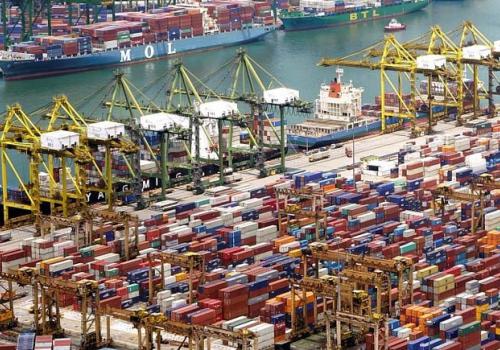Sri Lanka’s imports have picked up as exports and credit started to recover with September 2020 imports rising to 1.52 billion dollars after falling to 994 million US dollars in May amid a credit and consumption collapse, official data shows. In September 2020 exports were 1,000 million dollars up from 954 million last year and workers’ remittances have also picked by around 200 million dollars though 205 million dollars in tourism revenues were lost, central bank data showed. Imports were still down by around 200 million US dollars from the 1,711 million dollars recorded in 2019. Money to buy imports come from exports, remittances, tourism revenues and other services exports, which generates a deficit in the merchandise trade account when spent. Exports are also accounted as Free on Board, and imports as CIF, which also tends to widen the gap and provide grist for the mill of Mercantilists who are bothered by imports, the trade deficit, the current account deficit or all of them.
The trade deficit expands and becomes a current account deficit when the government borrows abroad to finance the budget deficit or foreign direct investment flows into build factories or buildings, which also generate imports. Net repayments of government debt which is not covered by foreign reserves could reduce imports and may even cause a trade surplus. Since recipients of exports proceeds (factory workers, shareholders), remittances (family members) save some of their money, whether or not imports are generated depends on credit given by the banking system to investors. However the rupee does not come under pressure unless money is printed by a soft-pegged central bank to finance credit over and above savings in the credit system. Sri Lanka’s rupee collapsed close to 200 to the US dollar in March as large volumes of money was printed and the peg was no defended under a de-stabilizing ‘flexible exchange rate’ leading to panic covering by importers and a surge in credit. A trade deficit is the result of domestic savings investment gap, and the current account deficit is the result of a national saving savings and investment gap which is bridged by foreign borrowings and foreign investment.
In the US, Donald Trump, a nationalist and Mercantilist had railed against the trade deficit. “To view the external balance correctly, the focus should be on the domestic economy,” explains Johns Hopkins economist Steve Hanke. “The external balance is homegrown; it is produced by the relationship between domestic savings and domestic investment. Indeed, it is the gap between a country’s savings (read: income, minus consumption) and domestic investment that drives and determines its external balance.” “So, the national savings-investment gap determines the current account balance. Both the public and private sector contribute to the current account balance through their respective savings-investment gaps. “The counterpart of the current account balance is the sum of the private savings-investment gap and public savings-investment gap (read: the public-sector balance).” In Sri Lanka the private sector is a net-saver and the government runs both an overall deficit and the deficit in the current account.
A country with a depreciating currency usually requires foreign inflows as domestic capital is evaporated, analysts say. Workers are also driven abroad due to cuts in real domestic salaries. Credit to private and state enterprises has started to recover from around July 2020 as did exports which give more money for workers to spend. Exports also need imported inputs. Credit to private businesses and state enterprises surged to 156 billion rupees in March, slowed to 78 billion rupees in April and collapsed to a negative 51 and 55 billion rupees in April and May. In August private and SOE credit recovered to 118 billion rupees and slowed to 82 billion rupees in September. Credit to SOEs generally drive imports directly as the largest loss-makers usually Ceylon Petroleum Corporation and Ceylon Electricity Board, where almost all credit turn directly into imports unlike private businesses. Meanwhile Sri Lanka has slammed import controls, banning some imports, after the ‘flexible exchange rate’ episode led to a collapse of the peg. But some imports have been allowed under supplier’s credit, which will have to be paid eventually.
